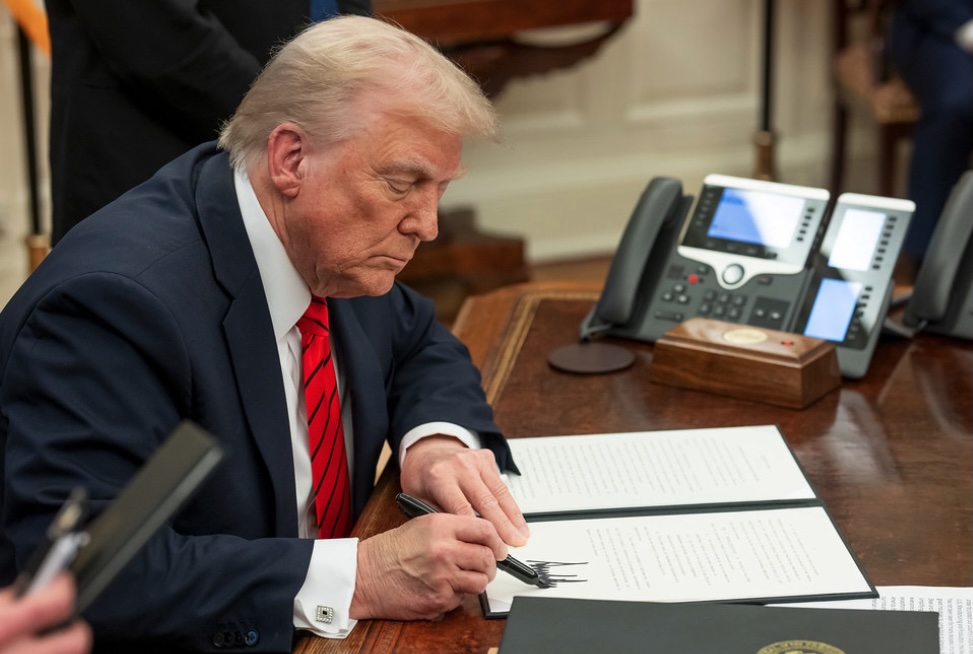What is the Role of the U.S. Department of Education?
PRAY FIRST for lawmakers to seek God’s will and God’s wisdom as they make decisions and create policies that directly impact the future of education in America and future generations.
Give justice to the weak and the fatherless; maintain the right of the afflicted and the destitute. Psalm 82:3
The U.S. Department of Education (ED) has been a hot topic of discussion lately, both praised and dissected repeatedly. However, what do we truly know about this department that has garnered so much attention? The ED was established in 1979 under the Carter administration, primarily to centralize and streamline federal education programs. Its creation reflected growing national concerns about the quality of education and the need for a federal entity to oversee and support educational initiatives.
Currently, the Department of Education’s primary responsibilities include administering federal funding to schools, enforcing educational laws, collecting and analyzing data, and ensuring equal access to quality education for all students. While its role is significant, it does not operate schools directly; rather, it supports state and local education agencies through grants and funding programs.
Funding and Budget Allocation
The ED is funded primarily through federal tax dollars. In recent years, its budget has hovered around $80 billion. While this funding is necessary for its budget, it can still fall short of meeting the diverse needs of public schools nationwide. Most educational funding comes from state and local governments, meaning federal contributions often supplement rather than sustain school budgets.
The allocation of federal funds is typically determined through formulas that consider factors like student poverty rates, school size, and educational needs. Programs like Title I, which supports schools with high numbers of low-income students, illustrate how funds are distributed to mitigate educational disparities. However, even with these efforts, many schools still experience funding shortfalls.
Curriculum and Federal Oversight
The Department of Education does not mandate the national curriculum. Instead, curriculum decisions are made at the state and local levels—reflecting the principles of federalism. Nonetheless, federal influence often manifests through initiatives like the Common Core State Standards and grant programs that encourage curriculum development aligned with national goals.
Federal oversight can provide valuable support and accountability, but it also raises concerns about overreach. For example, debates over standardized testing and culturally sensitive curriculum choices highlight the tension between federal guidelines and local control. Additionally, conflicts may arise when federal mandates intersect with religious or cultural beliefs, though legal frameworks like the First Amendment and the Equal Access Act aim to protect religious freedoms in public education.
Financial and Economic Considerations
Students in underfunded schools may experience lower academic achievement, reduced extracurricular opportunities, and limited access to advanced coursework. Educators in these environments can face burnout due to overcrowded classrooms and inadequate resources.
Tax policies directly influence educational funding. Increased federal investment in education could provide relief to struggling schools, while budget cuts could exacerbate existing inequalities. Policymakers must carefully weigh the long-term societal benefits of well-funded schools against the fiscal constraints of government spending.
Social and Community Impact
Education is a cornerstone of economic mobility and social well-being. Communities with well-funded schools often experience lower crime rates, higher employment levels, and greater civic engagement. Conversely, communities with underfunded schools often see continued cycles of poverty and limited opportunities for upward mobility.
Improving Education Outcomes by Empowering Parents, States, and Communities
President Donald Trump and other federal officials have voiced concern regarding the federal spending and potential bloat within the Department of Education. In an effort to return power to the states and deregulate education, on March 20th, the president signed an executive order stating, “The Secretary of Education shall, to the maximum extent appropriate and permitted by law, take all necessary steps to facilitate the closure of the Department of Education and return authority over education to the States and local communities while ensuring the effective and uninterrupted delivery of services, programs, and benefits on which Americans rely.”
“Closing the Department of Education would provide children and their families the opportunity to escape a system that is failing them,” the president added, saying, “Closure of the Department of Education would drastically improve program implementation in higher education.”
There is currently no timetable for the closure of the department, but administration officials are working to streamline the process. The final step for dismantling it would require an act of Congress.
Why It Matters and How We Can Respond
The well-being of all children should always be a matter of deep concern. Scripture repeatedly emphasizes the importance of caring for the vulnerable and pursuing wisdom and knowledge. Proverbs 22:6 reminds us to “Train up a child in the way he should go; even when he is old he will not depart from it.” This verse highlights the transformative power of training, educating.
We can support strategies that promote educational opportunity for students, especially those in disadvantaged communities. Moreover, we can support local schools through volunteering, mentoring, or participating in school board meetings. By committing to both prayer and meaningful action, we can contribute to a society where children are equipped with the tools and opportunities they need to succeed.
HOW THEN SHOULD WE PRAY:
— Pray for all who are making decisions about educational policy, that they will have godly discernment to take everything into account, past and present, when legislating decisions for the future. Let each of you look not only to his own interests but also to the interests of others. Philippians 2:4
— Pray for God to provide resources for schools in need and to stir the hearts of communities to support their local schools. Therefore, encourage one another and build one another up, just as you are doing. 1 Thessalonians 5:11
CONSIDER THESE ITEMS FOR PRAYER:
- Pray for policymakers to work towards appropriate distribution of resources, giving all of America’s children access to quality education.
- Pray for strength and motivation for teachers and school staff and that they may positively impact their students’ lives.
- Pray for local communities become more engaged in supporting their schools through volunteering, mentorship, and advocacy, creating environments where students can thrive.
Sources: U.S. Department of Education, National Center for Education Statistics, White House, Education Commission of the States, Congressional Budget Office, Institute of Education Sciences









